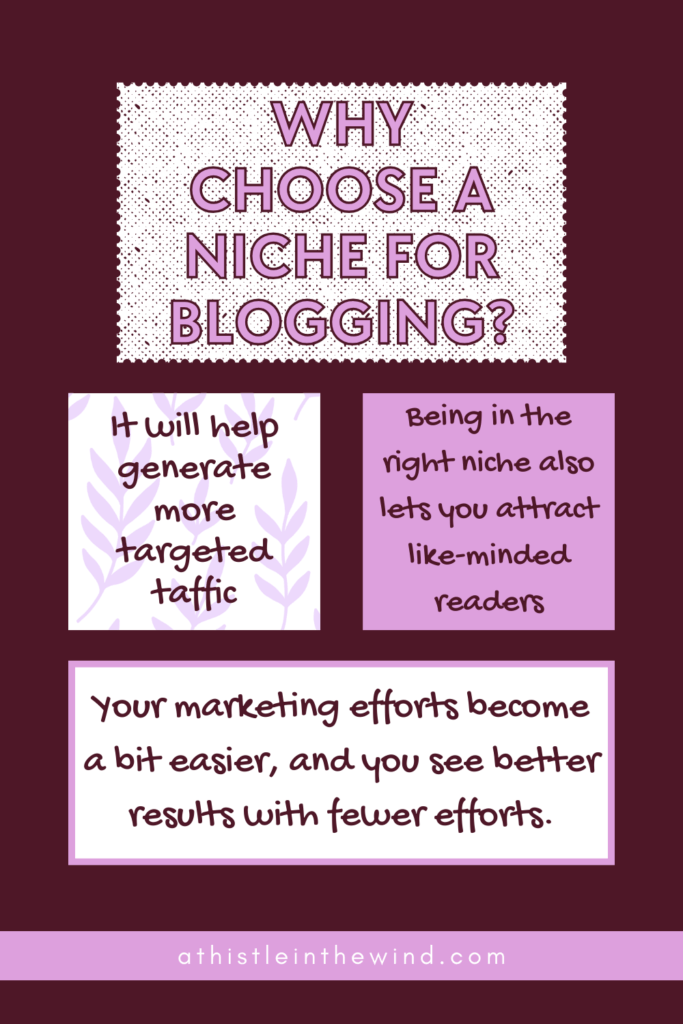Start a Blog in 2025: The Ultimate Beginner’s Guide

So, you want to start a blog in 2025. But how do you do it? After all, OpenAI did that thing again and now a lot of videographers I know are freaking out. I think we’re in a really interesting space right now, and digital media as we know it will change forever.
That being said, I don’t think blogging’s going to end anytime soon. If anything, I’ll reiterate what I’ve been saying for a few months now: the competition is getting tougher.
If you’re wondering where I’ve been for the past month, I’ve been busy building my Pinterest from the ground up. That’s also one of the reasons I decided to tackle this particular topic. I’ve come across hundreds, if not thousands (and I didn’t read them and I’ll tell you why), of sites on starting a new blog.
You can refer to any of these for the technical stuff. I’ll create a shorter post about that at some point. For now, I think the internet’s a good resource for hosting, setting up sites and stuff like that.
What I thought most interesting about these “how-to” blogs was that not many of them actually spoke about stuff from a creative’s perspective. I know, this might sound but hear me out.
You could create a website right now. It’s not that hard. WordPress is amazing for that, and I’ve recently started using SquareSpace and Wix, and they’re pretty cool too. What’s difficult is filling your blog with content.
Why Content is King and Everything Else is Secondary

If you take a look around my blog, you’ll see stuff about SEO, freelancing and writing. More recently, I’ve started talking about AI writing tools. That’s because I’ve been using them for a while now to help with my process. But they’re all talking about my experience as a copywriter-turned-marketer and what I think is important. Freelancing is a subject I haven’t tackled in a while. But I do like to talk about it because I started my career with that. And I do plan on talking about that again at some point, I just have a lot of ideas I’m trying to push out right now.
But primarily, my blog has a purpose. Because of that purpose, I can easily come up with ideas that’ll keep me writing. The primary purpose of my blog is to be my portfolio. So, I can showcase to potential employers that I know what I’m doing. A secondary purpose is to help out someone who like me. You know, someone who would’ve loved a website that wasn’t always pushing courses or telling me that I have to spend a lot of money to “learn the ropes” to even start a blog, to begin with. Of course, you will need to spend money on hosting and domain name, but that’s not a lot.
What matters is the content you’re pushing out, and everything comes later, after you’ve cultivated an audience.
So, how do you do that? Well, as I said, you need to have a good idea of what your blog should be about.
How to Launch A Blog in 2025: A Step-By-Step Guide
Start A Blog Step #1: Pick A Niche That You Can Write About for a Looong Time
There are tons of people out there who started their own blog and quit before anything became of it. A lot of it had to do with content. It’s easy to run out of ideas and ultimately give up.
Another reason is being all over the place. You could, in theory, start a blog about yourself, talk about travel, work, food, and celebrity gossip. But I wouldn’t recommend doing that in the beginning. Why? Because your audience will be confused.
That’s why defining your niche and choosing a blog name are two pivotal steps to be taken before you start a blog of any kind. You can start by identifying your passions, interests, and areas of expertise. Consider what topics resonate with you and align with your long-term commitment to creating content.
Learn More About Your Niche

Assess the market and audience demand by researching trending subjects, exploring relevant online communities, and identifying potential gaps in existing content. The goal is to find a niche that combines your interests with an audience eager for the kind of content you plan to provide.
Once you know roughly what you want to blog about, you need to start researching what other blogs in that niche are saying about that subject. This is particularly important if you don’t currently read that many blogs. You need to get an idea of the style of blogging in that niche.
What are people saying? How are they writing? What else do they include in their blog posts in terms of graphics, images, quotes, bullet points, headings, etc? How do you find blogs in your niche?
Head to Google and start searching topics you are thinking of writing about. Niche selection is definitely the #1 step for becoming successful with profitable blogging, but you should not be stuck at this stage for too long.
Naming Your Blog
To choose an effective blog name, start by brainstorming keywords related to your niche and content. Aim for a name that is easy to remember, spell, and pronounce. Your blog‘s name is the equivalent of an elevator pitch to potential readers, letting them know what to expect, the tone of your blog, and whether it’s something that would interest them.
You can use domain registration platforms to check the availability of your chosen blog name. It’s essential that the name is not only unique but also indicative of the content you plan to share. Strive for a name that is timeless and can grow with your blog as it evolves. There’s no shortage of content on the web. It may seem hard to stand out, but there are two ways you can compete: by choosing a specific niche to focus on and by creating content that has something about it that readers can’t easily find elsewhere.It’s important to choose a niche that is an inch wide but a mile deep. This will ensure you can consistently create content without running out of ideas, and influence your blog name.
My Recommendations
Unless you’re trying to start a blog or a portfolio site, I would recommend against using your name as your custom domain. You can still be the face of the blog, even if your personal name isn’t in the URL, and it’s a lot easier to build a sticky brand when you come up with a creative name that reflects your message.
Get it right and potential readers will know exactly what your blog is about. Get it wrong though, and you could potentially confuse and turn off the very readers you wish to visit your site.
Things to Keep in Mind
There are many more challenges ahead, and you should complete the entire process of niche selection within a week. Some benefits of having a good niche selection is:
More traffic
Since you will be taking the help of data to pick the niche, the probability of you building a high traffic blog would be higher. Also, since you are working in a laser-focused niche, you are more likely to get rewarded by Google in terms of organic traffic.
More loyal users
Being in the right niche also lets you attract like-minded users. Since your blog is going to be about one topic, your being in the right niche also lets you attract like-minded users.
Marketing becomes easier
This reason alone should compel you to spend a significant amount of time selecting a niche. When you have a focused blog, your marketing efforts become a bit easier than an unfocused blog, and you would see better results with fewer efforts.

Start A Blog Step #2: Research Your Audience and Competitors
After nailing down what your blog topic is, it’s also important to correctly identify who your target audience is. Begin by defining your ideal audience—consider their age, gender, location, interests, and online behaviours.
Utilise tools like Answer the Public and others to gather data on your potential readers. Analysing these metrics provides insights into the demographics of your existing audience or helps create a persona for your ideal reader. Explore relevant online forums, social media groups, and communities related to your niche to understand discussions, questions, and challenges within your target audience. Pay attention to the types of content they share, comment on, and find valuable.
Conduct keyword research to identify the specific topics and queries your audience is searching for, helping you tailor your content to address their needs. By thoroughly researching your audience, you can develop a deep understanding of their preferences, ensuring that your blog content is not only relevant but also compelling and valuable to the audience you aim to attract.
Why Audience Research is Important
By researching your audience in this way you can create web content that meets their needs and wants while resonating with them. Choosing a target audience is important for a blog or online business because it helps them create content and products tailored to that particular group of people. This means that the content and products will be more valuable and relevant to the audience, which can lead to more user engagement, higher conversions, and increased sales.
Another benefit of choosing the right target audience is that it allows you to plan a more consistent and focused marketing strategy. Ideally, you want to find readers who keep coming back to your blog. You want them to know your blog inside out and to devour your latest blog posts time after time.
As long as you stay consistent and focus on helping your readers, they’ll keep coming back. People, who find a connection with your blogging voice, are trusted fans. When your target audience finds out that you are the person to seek the best advice, and content, they become your fans!
Why You Need Loyal Readers

A consistent, loyal following of readers are very important for the long-term growth of your blog. They are the first to read your blog posts, leave comments and often give a link to your site. When you know who your target audience is, not only will you see a steady flow of traffic to your blog, but you’ll also find them sharing your content more frequently. You see, when your readers find valuable information on your blog, they are more willing to share it with others. And when they start engaging with your content, you’ll see even more traffic to your blog. Once you’ve established a foothold in your niche, you’ll start interacting with your audience more and more. They’ll leave comments on your blog posts and send you messages on social networks, for instance.
At the end of the day, every bit of interaction you have with your readers will help you build a relationship with them. This helps build brand loyalty, and so, if you decide to take on sponsorships or create a product, you can count on them to support you.
Perform a Competitive Analysis
Before you start a blog, you might want to do a bit of a competitive analysis. It can help you understand the market landscape and make informed decisions to improve your position in the industry. Depending on your business, you can analyse competitors in many ways.
Regularly conducting competitive analyses can help you with understanding your market and industry, comparing your results with your competitors’ performance, Identifying gaps in your strategy that your competitors address, developing strategies and tactics that promote your unique value proposition and staying on top of market changes to gain a competitive edge over your competitors.
The factors you include in your competitor analysis depend largely on your goals and industry. Compare your features or products to your competitors’ and highlight those that make you stand out or fall behind. Because we’re doing a competitive analysis on competition in the blogging world, some of the points are going to be more relevant than others.
For example, not all bloggers sell products through a blog; most make money from ad revenue or affiliate marketing. By understanding why your competitors are succeeding, you can apply the same methods to your own blog. This will help drive more traffic to your site and potentially divert it from other sites.
After all, that’s the ultimate goal— to steer more people toward your blog. Ongoing competitive research has to be a part of your marketing in order to grow your business and beat your competition in the process. And a fact-finding mission is not just how you stay ahead of the competition, it’s how you grow your marketing by learning as much as you can about those you want to beat.
How to do a Competitive Research

Begin by identifying your main competitors within your chosen niche. Analyze their content, including blog posts, articles, and multimedia, to gain insights into their style, tone, and the topics they cover. Assess the engagement metrics on their platforms, such as the number of comments, social media shares, and backlinks, to gauge audience response and content effectiveness.
You and your competitors are trying to attract the same audience. If people are sharing content from competitors’ sites, there’s a good chance they’ll share similar content from your site as well. That’s why it’s important to research what content competitors are publishing and where they’re finding the most engagement.
Using BuzzSumo, you can enter your competitor’s domain name and it instantly analyses your competitor’s blog content. You’ll end up with a table containing the number of social shares for each of that website’s posts; the posts with the highest number of social shares are at the top of the list.
Collecting information about your competitors is no good if it’s all jumbled. Make sure the information you collect is stored in an accessible and organised way. One of the best ways to do this is by using a spreadsheet. If you have a large spreadsheet with a separate worksheet for either each competitor or blog element (or both), you’ll be able to see the information you need at a glance.
You might also need to think about how you want to organise this information at this stage. The best way to do this is to consider what you are trying to improve.If you’re trying to improve the number of people who visit your blog for the first time, you’ll want to take a close look at your competitors’ advertising and search engine optimization.
Direct vs. Indirect Competitors
If you’re trying to improve the number of people who return to your blog after their initial visit, you’ll likely want to pay careful attention to how your competitors write their content and how they market to existing visitors. Divide your “competitors” into two categories: direct and indirect.
Direct competitors are businesses that offer a product or service that could pass as a similar substitute for yours and that operate in your same geographic area.
On the flip side, an indirect competitor provides products that are not the same but could satisfy the same customer need or solve the same problem. When comparing your brand, you should only focus on your direct competitors.
This is something many brands get wrong. When a competitor is identified, have your sales team dive deeper by asking why they are considering switching to your product. If you’ve already lost the deal, be sure to follow up with the prospect to determine why you lost to your competitor. What services or features attracted the prospect? Was it about price? What‘s the prospect’s impression of your sales process? If they’ve already made the switch, find out why they made this decision.
By asking open-ended questions, you’ll have honest feedback about what customers find appealing about your brand and what might be turning customers away. Once you‘ve answered these questions, you can start scoping out your competitor’s marketing efforts.
By researching your competitors comprehensively, you can position your blog strategically, learn from their successes and shortcomings, and create a content strategy that stands out in the competitive landscape.
Determine What Your Competitors are Doing

Understanding what types of technology your competitors use can be critical for helping your own company reduce friction and increase momentum within your organisation. To figure out which software your competitors use, type the company’s URL into Built With, an effective tool for unveiling what technology your competitors’ site runs on, along with third-party plugins ranging from analytics systems to CRMs. Alternatively, you might consider looking at competitors’ job listings, particularly for engineer or web developer roles. The job listing will likely mention which tools a candidate needs to be familiar with in a creative way to gain intel into the technology your competitors use.
Researching your competitors is extremely important. When you know what’s working for them, you can create your own content around similar topics and give it your own spin. Or you can create similar types of content, such as infographics or interviews. It requires a bit of time to find and analyse competitor performance metrics, but using the right tools makes the process easier. It’s definitely worth the effort!
Start A Blog Step #3: Choose Your Host Server
Selecting the right hosting provider is critically important before you start a blog because it profoundly influences the overall performance, user experience, and success of your website. The hosting provider is responsible for storing your blog’s files, delivering them to users when they visit your site, and ensuring that your website is accessible around the clock.
The speed and reliability of your blog are directly tied to the hosting provider’s infrastructure, server capabilities, and network connectivity. A reputable hosting provider can offer faster loading times, ensuring a positive user experience and reducing bounce rates. If you are spending all that time creating a wonderful blog, writing hard, sharing everywhere and building a business, the last thing you want is downtime.
Downtime is when your blog can’t be viewed by your readers. This can be for a number of reasons: but one of the most common is because your host is having server problems. And hosts vary hugely on this one. Some hosts will proudly declare that they have 99.99% uptime, while others are notorious for being down a lot. So try and find this out before choosing your host.
Another big consideration when choosing a hosting company for your blog is security. You want to make sure your blog is being protected and is not getting hacked. Now your hosting company is most likely not going to do the whole job for you (this depends a little on the level of plan you are on) – you will probably need a security plugin too, but a good host certainly should do a lot to protect your blog.
Your Host Must Be There For You Allll The Time

When choosing a host, check out what they say about their support, read reviews, ask other bloggers what the support is like and my top tip: try it out. All hosts will have pre-sales support. So think of a few awkward questions and contact their support team. Obviously, it’s a slightly imperfect test as their pre-sales support team might be different to their customer support team, but it will give you a good idea! Especially if they are unhelpful, rude or they ignore you. If you have trouble with pre-sales support, don’t touch them with a bargepole.
One other question is what level of hosting to go to. Most hosts have a range of different hosting plans at different price points and which offer different levels of service. Usually when starting out the best policy is to start on the lowest tier and upgrade later as and when you need it. But if you are not sure, just ask the pre-sales team.
Tell them what you need and ask them which level they recommend and ask them at the same time how easy it is to move up to the next tier. A good host will not try to sell you more than you need right now and will make it very easy to move up to the next level when you need it.
Ultimately, the choice of a hosting provider impacts the scalability, reliability, and security of your blog. A well-chosen provider allows your blog to grow seamlessly, caters to the needs of your audience, and provides a foundation for long-term success. Taking the time to research and select the right hosting provider ensures a solid infrastructure for your blog’s online presence.
Start A Blog Step #4: Design Your Blog
Designing your blog is essential because the visual appeal and user experience of your website significantly influence its success. A well-designed blog not only attracts visitors but also keeps them engaged and encourages them to explore your content. In the digital age, first impressions matter, and your blog’s design is often the first thing visitors notice.
A clean, intuitive, and visually pleasing layout creates a positive impression, instilling confidence in the professionalism and credibility of your content. Mobile responsiveness is crucial in 2025, as a significant portion of internet users access content through smartphones and tablets. Ensuring that your blog is optimised for various screen sizes enhances the user experience and contributes to higher search engine rankings. Navigation is another critical aspect of design.
A well-organised menu and easy-to-find categories help users quickly locate the information they seek, reducing bounce rates and increasing overall engagement. Implementing clear calls-to-action and strategically placing them within your design can also guide visitors toward desired actions, such as subscribing to your newsletter or exploring related content.
Branding elements, such as a unique logo, colour scheme, and consistent typography, contribute to the establishment of your blog’s identity. A strong and cohesive brand presence fosters recognition and trust among your audience. Beyond aesthetics, design influences website speed, which is a vital factor in both user experience and search engine optimization.
It sets the tone for your blog’s professionalism and directly impacts its ability to attract and retain visitors in the competitive online landscape of 2025.
Start A Blog Step #5: Don’t Forget Your SEO Strategy

At this point, I’ve spoken a lot about SEO in the past few weeks but you can’t get out of it. SEO is essential for the success of your blog and it can actually help you organically grow traffic, and even give you cool content ideas.
Striking a balance between quality and SEO content writing is key to the success of when you start a blog. Remember, writing high quality content is still critical for higher search engine rankings. Prioritise writing valuable content that answers questions, solves problems, or provides useful information. SEO should function as a secondary objective, guiding the structuring and formatting of your high quality content.
You can check out my blogs on SEO for a more in-depth look into SEO.
Start A Blog Step #6: Develop a Content Plan
You can ensure your blog’s success by planning your content in advance. This will help you attract more readers and keep them coming back for more. If you’re new to blogging, a content planner can help you get started on the right foot. It will help you define your goals, identify your target audience, and generate content ideas.
And If you’re already blogging, a content planner can help you make your blog even more successful. It will help you stay organised and consistent with your blogging, and it will also help you track your results and make adjustments to your strategy as needed.
A blog content plan is like a recipe for your blog. It tells you what ingredients you need (content topics), how much of each ingredient you need (length of content), and when you need to add each ingredient (publishing schedule).
- It helps you save time: When you know what you’re going to write about in advance, you can spend less time brainstorming and more time creating content.
- It helps you stay organised: A content plan helps you keep track of your blog posts, from start to finish. This can be especially helpful if you have a team of writers working on your blog.
- It helps you create more consistent content: When you have a content plan, and plan your content in advance you’re more likely to publish new blog posts on a regular basis. This is important for keeping your readers engaged and coming back for more.
- It helps you achieve your blog goals: Whether you want to increase traffic, generate leads, or sell products and services, a content plan can help you get there. Next, develop a content calendar outlining the topics you plan to cover.
What Kind of Content Should You Create?

Consider incorporating a mix of evergreen content, which remains relevant over time, and timely content that addresses current trends and news within your niche. Conduct keyword research to understand what terms and topics are relevant to your audience. Integrate these keywords strategically into your content to improve search engine visibility. Additionally, plan for pillar content—comprehensive, in-depth articles that serve as foundational pieces for your blog.
If your aim is to build a loyal readership, focus on creating value-driven, shareable content. If monetization is a goal, plan for content that aligns with potential revenue streams, such as affiliate marketing or sponsored posts.
Consider multimedia elements such as images, infographics, and videos to enhance the visual appeal of your blog. Visual content not only makes your blog more engaging but also caters to different learning preferences. By planning your content strategy thoughtfully, you set the stage for a well-organised and purposeful blog that consistently delivers valuable content to your readers, contributing to its long-term success. You can do this by creating a content calendar.
For more information on content planning and creating a content calendar, check out my blog post.
Start A Blog Step #7: Start Writing
Once you have everything planned out, you can now start with the fun part (in my opinion): writing. Start off by writing at least three articles before you hit publish. Do NOT make the mistakes I’ve made. For best results, I would recommend that, before you start a blog, you ought to write 5 to 10 articles in advance, make sure SEO’s alright, and then hit publish. For your first batch of articles, you might want to publish a few at the same time, and then maybe schedule the remaining ones for the weeks to come. You should always aim to have 4 to 5 articles scheduling for publishing over the course of the next month.
Your publishing schedule depends on you, of course. I, for one, have been trying to stick to publishing once a week, but I failed at that and we’re here a month later. However, if you’re super busy like me, you can even aim to schedule a post once every two weeks, though that will hurt your organic traffic. In the short-term. The goal here is to consistently churn out content but not bad content. Quality matters and you shouldn’t fret over publishing one article everyday.
I prefer writing longer pieces and they perform better and I’m willing to push back publishing an article unless I’m happy with the results. Your goal with writing should be to provide valuable content, something that your reader will benefit from.
Hopefully, this will help you when you start a blog!




13 Comments
Perry
Hi, My friend recommended your site to me. I just wanted to drop in and say that I’m browsing through your site and find it very informative. Great job!
athistleinthewind
aww, that’s so sweet! Thank you:)
Mimi
Hi Sura! Great blog. You have a very nice writing style!
Ronald
I agree with all your points, but I think it’s very hard to get traffic thank to AI these days
Nami
Awesome!
Serebryany
Great post! Can you write an update with new AI overviews?
athistleinthewind
Hi Serebryany, I’m actually working on one right now! I expect it’ll still take about 3 weeks for me to actually publish it. So, keep an eye out for that! 😀
Coco
Fashion blogs are so hard to maintain. Do you have any tips for those?
athistleinthewind
Hi Coco! For fashion blogs, I would recommend that you create a content plan; focus on stuff like fashion history maybe? You can have categories in your blog; I have AI, SEO, writing, blogging etc and you can create content according to that. Maybe fashion hauls? Just thinking out loud here 🙂
Miranda
I’m thinking about starting a blog but the niche is confusing me
athistleinthewind
Hi Miranda! Choose a niche according to what your interests are. I’m pretty set on writing, to be honest, but even I’m just seeing where this journey leads me. Basically, you need to do something you can do for a long time; think 10+ years.
Xian
Great article to read! Can you talk about how ChatGPT has changed the process?
athistleinthewind
Hi Xian, you can find my AI blogs here:https://www.athistleinthewind.com/category/ai/ I’m currently working on a piece on AI Overviews; I will at some point update this blog to be like a master blog post or something. So, watch out for that!